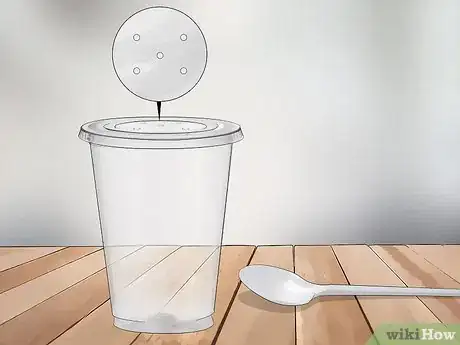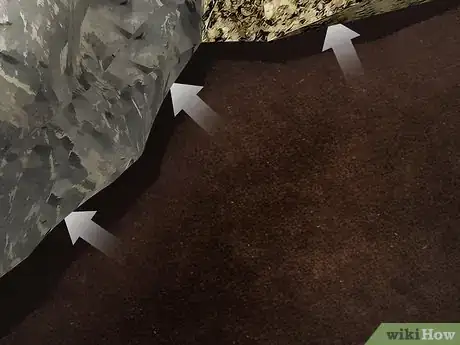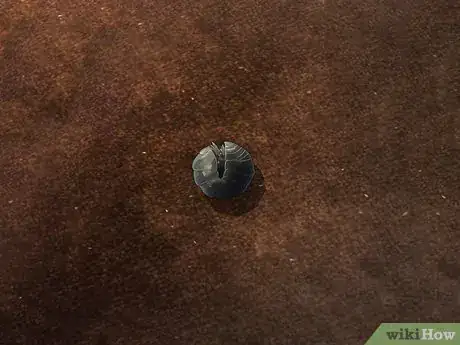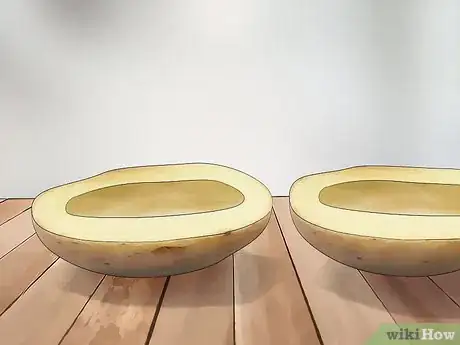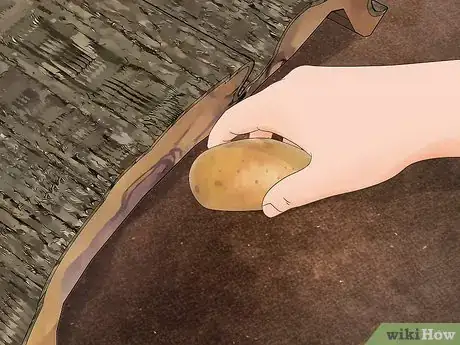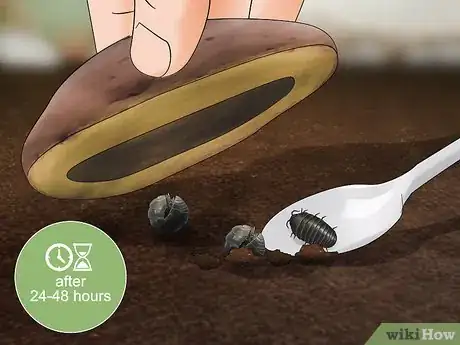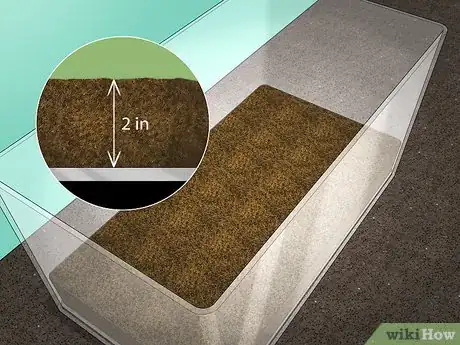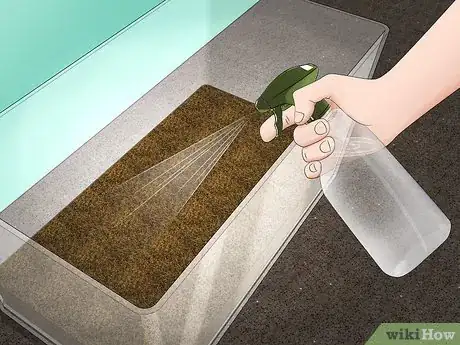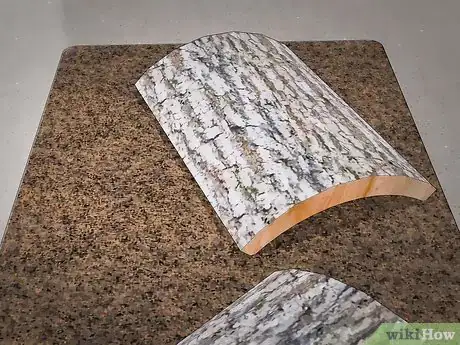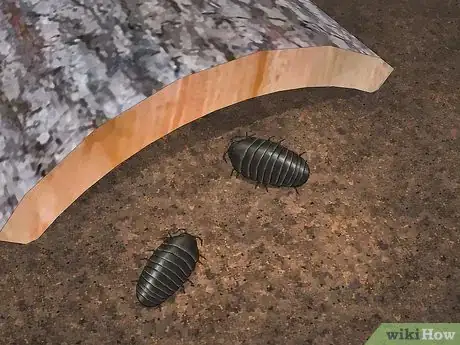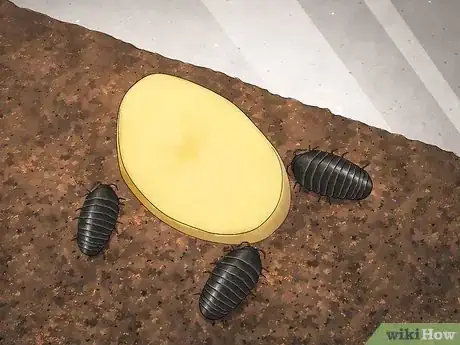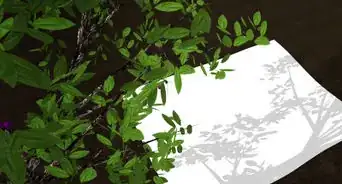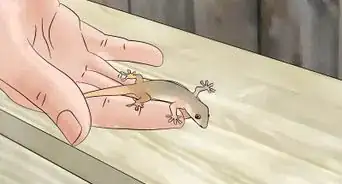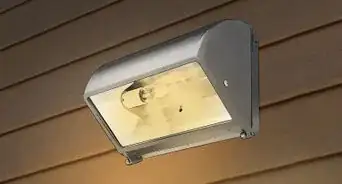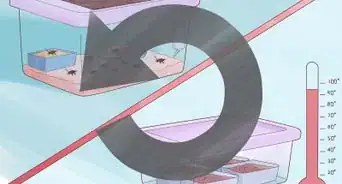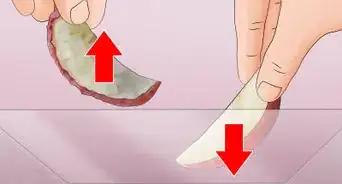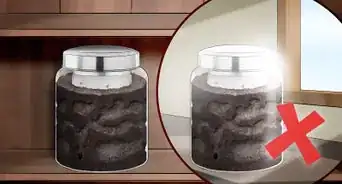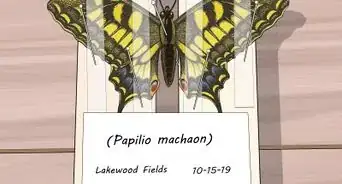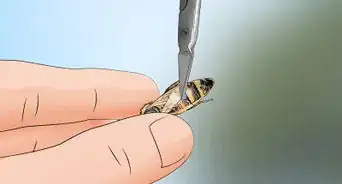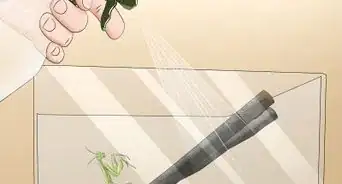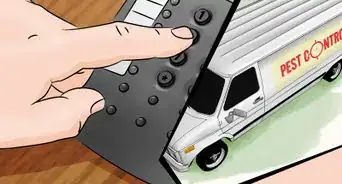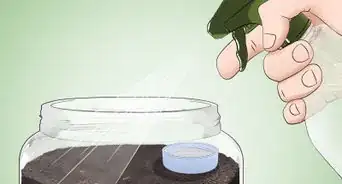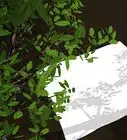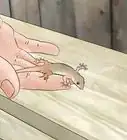This article was co-authored by wikiHow Staff. Our trained team of editors and researchers validate articles for accuracy and comprehensiveness. wikiHow's Content Management Team carefully monitors the work from our editorial staff to ensure that each article is backed by trusted research and meets our high quality standards.
This article has been viewed 41,930 times.
Learn more...
Isopods like pillbugs and sowbugs are fascinating little critters! You can find them scurrying around anywhere dark and damp, like leaf litter, compost heaps, or under logs. They are fun to watch, collect, and look after. Set a potato trap if you are having trouble finding isopods and keep any you catch in a container with plenty of soil, bark, and stones. There are also giant isopods living in the deep sea! They are quite rare and you can see them at specialty aquariums and museums.
Steps
Collecting Isopods
-
1Get a plastic cup and spoon to catch the isopods. Cut a few holes in the lid of a clean, plastic drinking cup to create ventilation. A plastic spoon is good for quickly scooping up any isopods you find and transferring them to the cup.[1]
- Alternatively, use a plastic container with a lid.
-
2Look for isopods in dark, sheltered, and damp places. Isopods like pillbugs and sowbugs are often found under logs, rocks, compost heaps, and leaf litter. Flip logs and rocks carefully, and use the spoon to disturb leaf litter and compost heaps. The isopods will scatter when they are disturbed and exposed to light.[2]
- Try looking for isopods in your backyard, parks, forests, and around ponds.
- A flashlight can be useful for spotting isopods.
Advertisement -
3See if the isopod rolls into a ball to spot a pillbug. It's easy to tell pillbugs and sowbugs apart. Pillbugs curl into a ball when they feel threatened whereas sowbugs just scatter.[3]
- Pillbugs and sowbugs are very common garden isopods. They both make great pets!
-
4Scoop the isopods into the plastic cup with the spoon. Take the lid off the cup before you upturn any logs or rustle any leaves. Carefully move the logs, rocks, compost, or leaf litter and begin searching. Place the plastic spoon in front of an isopod as it moves and then transfer it into the cup. Try a different spot once you can’t see any more isopods, as they will all be hiding.[4]
- Lightly tap the spoon on the side of the container to drop the isopod in.[5]
Using Potato Traps
-
1Cut a potato in half lengthwise and scoop out each center with a spoon. Place the potato on a chopping board and use a sharp knife to slice it. Isopods love to eat rotting vegetables, so potatoes make great bait.[6]
- Get an adult to help if you have trouble with the knife.
- You don't need to wash or peel the potato.
-
2Place each potato half skin-side down under a log or in leaf litter. Find a damp, dark place in your backyard to put the potato traps. Position each potato half like a bowl and cover it well with leaves.[7]
- Make sure that each potato half is covered fully by leaves so that it isn't exposed to the light.
-
3Collect isopods from the potato halves after 24-48 hours. Gently move the log or leaf litter to uncover the trap. Lift the trap and use a plastic spoon to scoop out any isopods into a plastic container. Otherwise, tap the potato gently over the opening on the container so the isopods fall in.[8]
- Make sure the plastic container lid has holes for ventilation.
Caring for Isopods
-
1Get a 1 US gal (3.8 L) plastic container with holes in the lid. Either a plastic storage container or a small aquarium is ideal. Use scissors or a drill to punch a few holes in the lid so that air can circulate.[9]
- This container size is great for 20-30 isopods.
- Ask an adult for help using scissors or a drill if you need.
-
2Add 2 in (5.1 cm) of damp soil to the bottom of the container. Put on some gardening gloves and get soil from where you found the isopods. Spread it out evenly across the bottom of the container.[10]
- Replace the soil twice each year and remove any dead isopods at the same time.
-
3Mist the soil with water every day to keep it damp. Fill up a spray bottle with cool water. Check the soil twice per day and lightly spray it with water to keep it moist.[11]
- The soil only needs to be damp, not saturated.
- You don't need to give the isopods drinking water, as they get plenty from the moist soil and their food.
-
4Place stones, bark, or crumpled paper in the container to give the isopods cover. Look around your backyard and collect anything that you think the isopods would like. Small twigs and a few leaves work well too![12]
- Try to make the container look like the natural habitat.
-
5Transfer the isopods into their new home. Use a plastic spoon to carefully move the isopods from the collection container into their new habitat. You can also gently tip the plastic container onto the soil, as the isopods won’t get hurt when they fall.[13]
- Remember to put the lid on the container when you are done.
-
6
Community Q&A
-
QuestionWhat if you don't have a gold fish bowl and the other items?
 Community AnswerLook around the house for similar items or maybe go to a pet store and get a fish bowl there.
Community AnswerLook around the house for similar items or maybe go to a pet store and get a fish bowl there. -
QuestionDo rolypolys like vinegar?
 CremelloHorseCommunity AnswerNo, they will run away from the smell! If terrestrial isopods are exposed to chemicals such as acetic acid (vinegar), they then will exhibit negative chemotaxis to avoid the chemical.
CremelloHorseCommunity AnswerNo, they will run away from the smell! If terrestrial isopods are exposed to chemicals such as acetic acid (vinegar), they then will exhibit negative chemotaxis to avoid the chemical. -
QuestionDo giant isopods live in the same conditions?
 Community AnswerNo, giant isopods live in the deep sea where pressure is extremely high. It is not possible to keep a giant isopod alive since you cannot recreate the pressure.
Community AnswerNo, giant isopods live in the deep sea where pressure is extremely high. It is not possible to keep a giant isopod alive since you cannot recreate the pressure.
Things You’ll Need
Collecting Isopods
- Plastic cup with lid
- Scissors
- Plastic spoon
- Flashlight
Using Potato Traps
- Sharp knife
- Chopping board
- Spoon
- Plastic container with lid
- Scissors
- Plastic spoon
Caring for Isopods
- Plastic container
- Scissors or drill
- Gardening gloves
- Soil
- Spray bottle
- Stones, bark, leaves, twigs, or crumpled paper
- Plastic spoon
- Plastic container
References
- ↑ http://www.sbstatesman.com/2015/09/09/bio-204-students-scavenge-for-isopods/
- ↑ http://soilbugs.massey.ac.nz/isopoda.php
- ↑ https://media.vwr.com/emdocs/docs/scied/Land_Isopods.pdf
- ↑ http://www.sbstatesman.com/2015/09/09/bio-204-students-scavenge-for-isopods/
- ↑ https://workbasedlearning.pnnl.gov/pals/resource/cards/pillbugs.stm
- ↑ https://pestworldforkids.org/downloadFile?id=1233
- ↑ https://workbasedlearning.pnnl.gov/pals/resource/cards/pillbugs.stm
- ↑ https://workbasedlearning.pnnl.gov/pals/resource/cards/pillbugs.stm
- ↑ https://pestworldforkids.org/downloadFile?id=1233
- ↑ https://media.vwr.com/emdocs/docs/scied/Land_Isopods.pdf
- ↑ https://media.vwr.com/emdocs/docs/scied/Land_Isopods.pdf
- ↑ https://media.vwr.com/emdocs/docs/scied/Land_Isopods.pdf
- ↑ https://media.vwr.com/emdocs/docs/scied/Land_Isopods.pdf
- ↑ https://media.vwr.com/emdocs/docs/scied/Land_Isopods.pdf
- ↑ https://petponder.com/what-are-eating-habits-of-pill-bugs
About This Article
To catch isopods, look for them in dark, damp places, like underneath branches, rocks, and leaves. Just move slowly and carefully when you flip things over so you don't scare the isopods away. If you find one, use a spoon to scoop it up, and place it into a plastic cup. Once you've captured some isopods, you can keep them in an aquarium that's lined with a couple inches of damp soil. To learn how to make your own isopod trap, scroll down!
